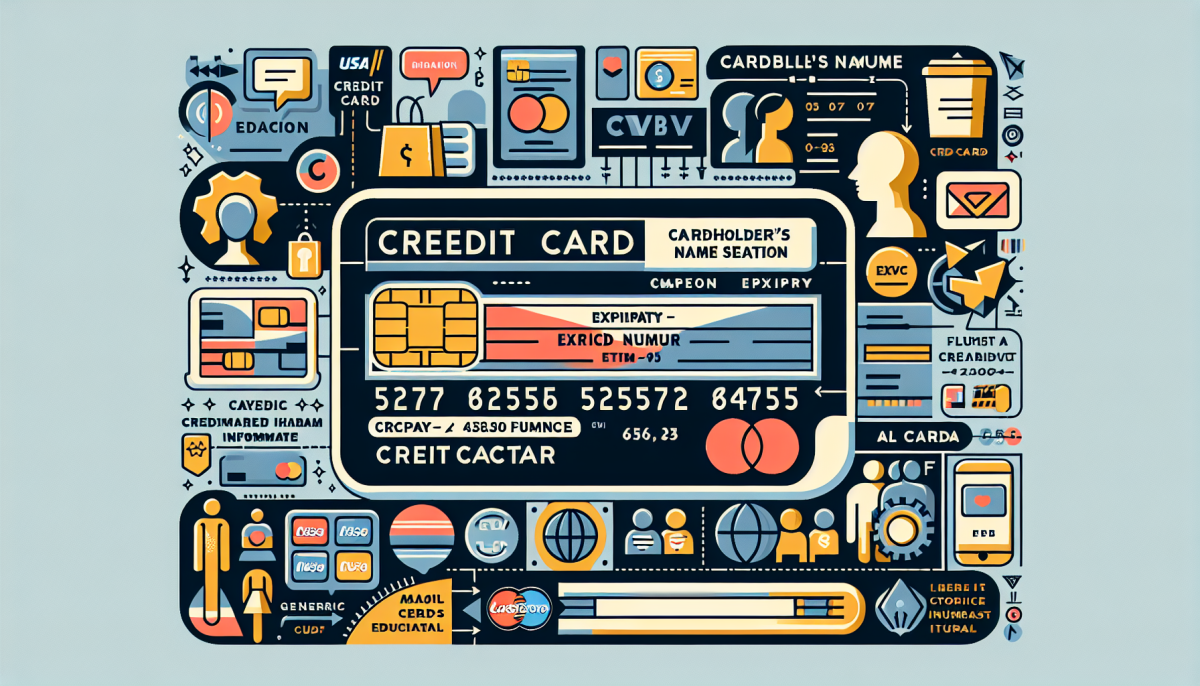Credit cards have become an integral part of modern financial transactions, offering convenience, security, and a range of benefits. However, navigating the intricacies of credit card information can be daunting for both new and seasoned users. Understanding how credit cards work, what information they contain, and how to interpret your credit card statement is crucial for effective financial management. This essential guide aims to demystify credit card information, helping you make informed decisions and maintain healthy financial habits.
Understanding the Basics of Credit Card Information
Credit cards are essentially a form of revolving credit issued by financial institutions, allowing cardholders to borrow funds for purchases and repay them over time. Each credit card comes with specific details that are vital for its use and management. These details include the cardholder’s name, card number, expiration date, and security code (CVV). The card number, a 16-digit figure, is unique to each card and essential for transactions, while the expiration date ensures the card remains valid. The CVV, typically found on the back of the card, adds an extra layer of security for online and phone transactions.
Beyond these basics, credit cards also include information about the issuing bank or financial institution, identifiable by the first few digits of the card number, known as the Bank Identification Number (BIN). This information is crucial for processing transactions and ensuring funds are appropriately allocated. Additionally, credit cards often come with various features such as rewards programs, cash-back offers, and travel benefits, all of which are designed to entice users and provide added value.
Understanding the credit limit is another fundamental aspect of credit card information. The credit limit represents the maximum amount of credit that can be utilized at any given time and is determined by factors such as credit score, income, and financial history. Exceeding this limit can result in penalties and negatively impact your credit score. Therefore, it’s imperative to monitor your spending and always be aware of your available credit to avoid potential pitfalls.
Key Components of Your Credit Card Statement
A credit card statement is a monthly report provided by your credit card issuer that details your account activity and balance for the billing cycle. One of the most critical components of the statement is the “Summary of Account Activity,” which provides an overview of transactions, payments, credits, fees, and interest charges. This section is essential for tracking your spending and ensuring all transactions are accurate. Any discrepancies should be addressed immediately to avoid potential fraud or errors.
The “Payment Information” section outlines the minimum payment due, the due date, and, importantly, the total balance owed. Paying at least the minimum amount by the due date helps maintain your account in good standing and avoids late fees. However, it’s advisable to pay more than the minimum, or the full balance if possible, to minimize interest charges and reduce overall debt. The statement also includes information on the annual percentage rate (APR) for different types of transactions, such as purchases, balance transfers, and cash advances.
Another crucial part of your credit card statement is the “Transaction Details,” which lists every individual transaction made during the billing period. This includes the date, merchant name, and amount for each purchase or payment. Reviewing this section carefully can help you monitor your spending habits, identify unauthorized transactions, and manage your budget more effectively. Additionally, many statements feature a “Rewards Summary” if your card offers loyalty points or cash-back, providing a snapshot of the rewards earned and redeemed during the cycle.
Understanding credit card information is essential for effective financial management and responsible credit use. By familiarizing yourself with the basics of credit card details and diligently reviewing your credit card statements, you can safeguard your finances, avoid unnecessary fees, and make the most of the benefits offered by your card. Knowledge is power, and in the realm of credit cards, staying informed empowers you to make decisions that enhance your financial well-being. Whether you’re new to credit cards or seeking to deepen your understanding, this guide serves as a stepping stone towards mastering your credit card usage.


